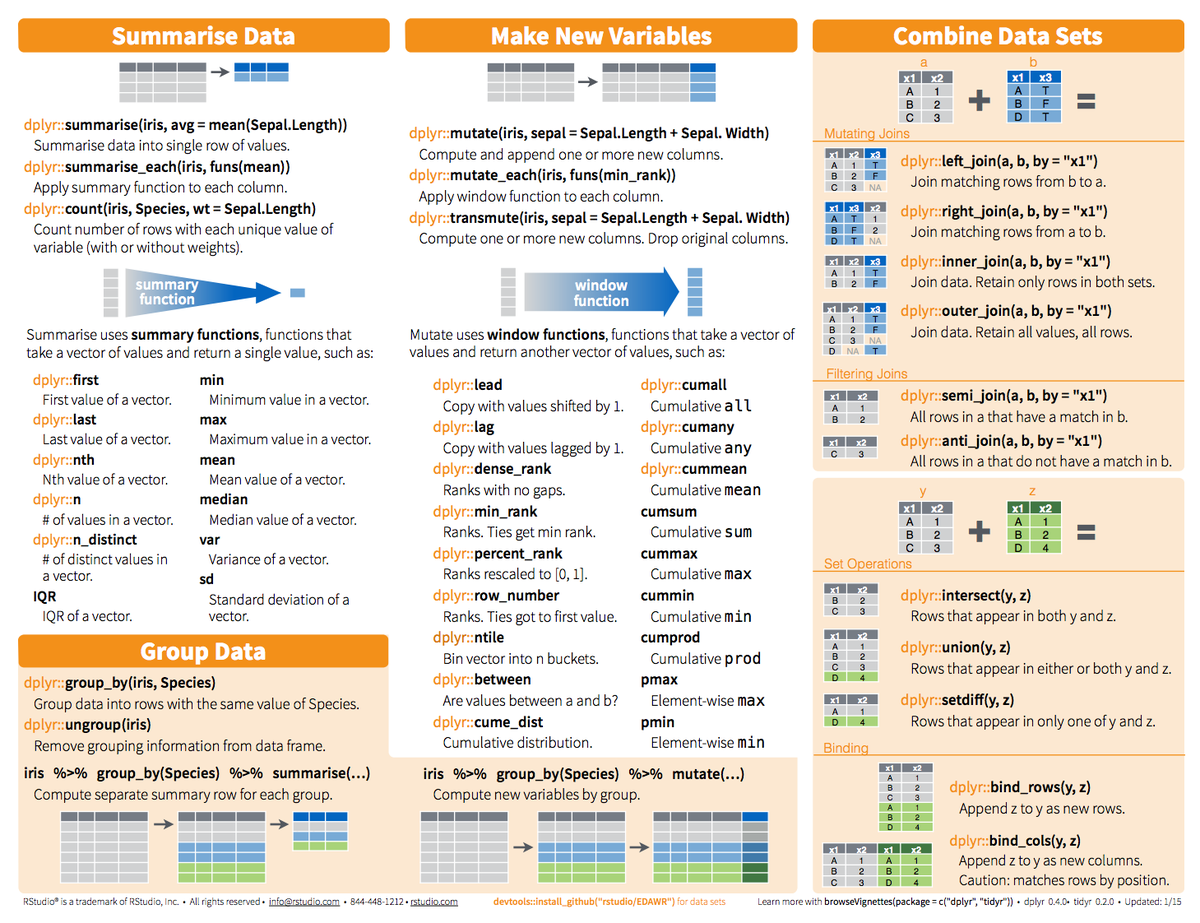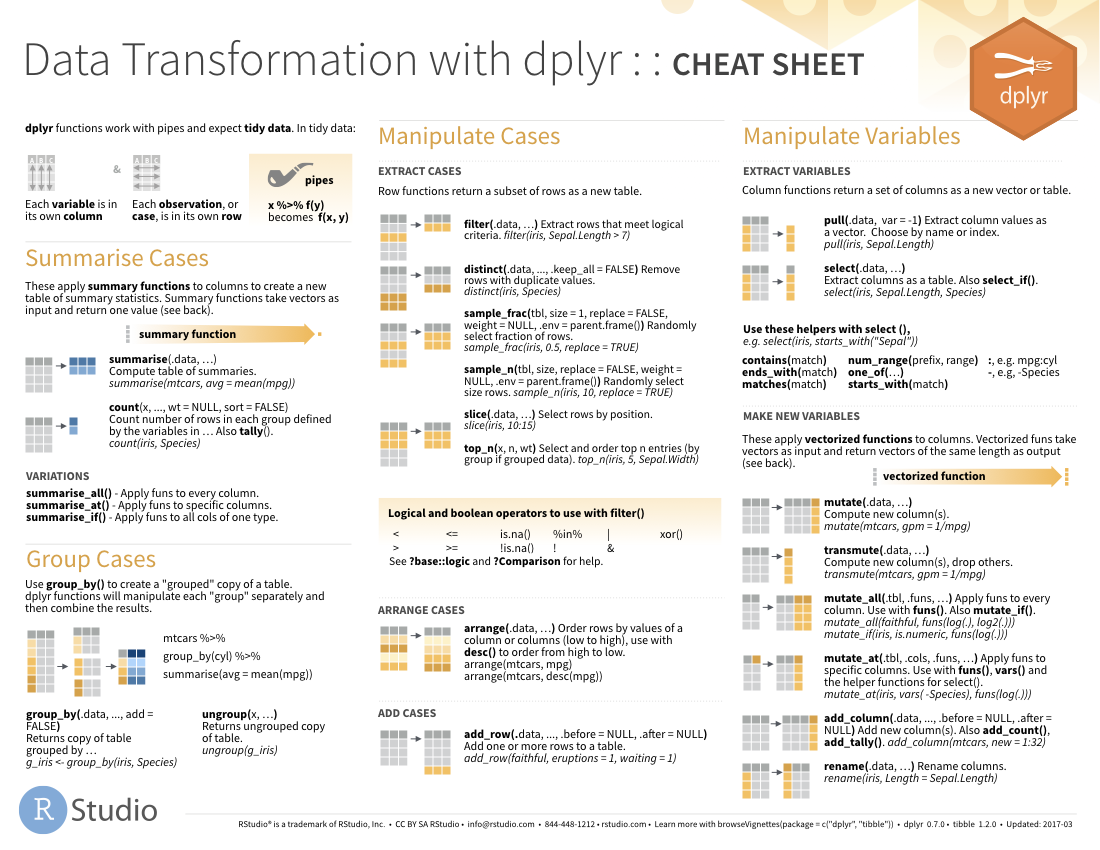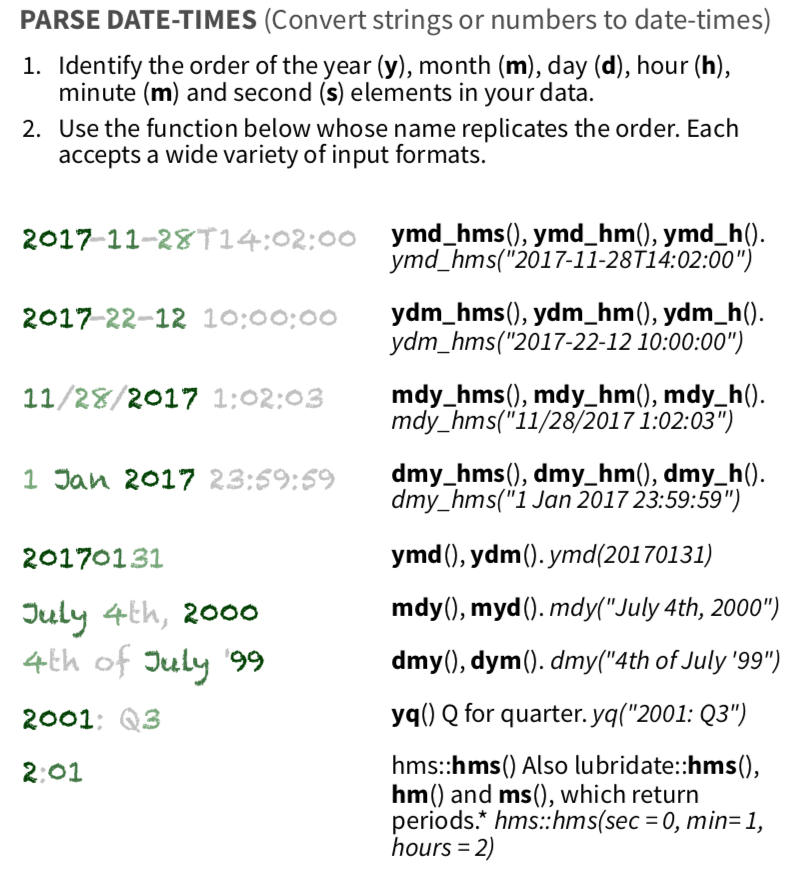I reproduce some of the plots from Rstudio’s ggplot2 cheat sheet using Base R graphics. I didn’t try to pretty up these plots, but you should.
I use this dataset
The main functions that I generally use for plotting are
- Plotting Functions
plot: Makes scatterplots, line plots, among other plots.lines: Adds lines to an already-made plot.par: Change plotting options.hist: Makes a histogram.boxplot: Makes a boxplot.text: Adds text to an already-made plot.legend: Adds a legend to an already-made plot.mosaicplot: Makes a mosaic plot.barplot: Makes a bar plot.jitter: Adds a small value to data (so points don’t overlap on a plot).rug: Adds a rugplot to an already-made plot.polygon: Adds a shape to an already-made plot.points: Adds a scatterplot to an already-made plot.mtext: Adds text on the edges of an already-made plot.
- Sometimes needed to transform data (or make new data) to make appropriate plots:
table: Builds frequency and two-way tables.density: Calculates the density.loess: Calculates a smooth line.predict: Predicts new values based on a model.
Data Wrangling In R Cheat Sheet 2019
All of the plotting functions have arguments that control the way the plot looks. You should read about these arguments. Download kyocera cameras. In particular, read carefully the help page ?plot.default. Useful ones are:
- The majority of data wrangling cheat sheets were created as a handy guide for those using technical languages, such as R or Python, to prepare data. A data wrangling cheat sheet compiles all of the most common scripts used to prepare data for easy reference on one page.
- Or copy & paste this link into an email or IM.
main: This controls the title.xlab,ylab: These control the x and y axis labels.col: This will control the color of the lines/points/areas.cex: This will control the size of points.pch: The type of point (circle, dot, triangle, etc…)lwd: Line width.lty: Line type (solid, dashed, dotted, etc…).
This cheat sheet is inspired by the data wrangling cheat sheets from RStudio and pandas. Examples are based on the Kaggle Titanic data set. Created by Tom Kwong, September 2020. V0.21 rev3 Page 2 / 2 gdf = groupby(df,:pclass) gdf = groupby(df, :pclass,:sex) Group data frame by one or more columns. Reshaping Data - Change the layout of a data set Subset Observations (Rows) Subset Variables (Columns) F M A Each variable is saved in its own column F M A Each observation is saved in its own row In a tidy data set: & Tidy Data - A foundation for wrangling in R Tidy data complements R’s vectorized operations. R will automatically preserve.
Discrete
Barplot
Different type of bar plot
Continuous X, Continuous Y

Scatterplot
Jitter points to account for overlaying points. Itronix laptops & desktops driver download.
Add a rug plot
Add a Loess Smoother
Loess smoother with upper and lower 95% confidence bands
Loess smoother with upper and lower 95% confidence bands and that fancy shading from ggplot2.
Add text to a plot
Tidyverse Cheat Sheet Pdf
Discrete X, Discrete Y

Mosaic Plot
Color code a scatterplot by a categorical variable and add a legend.

par sets the graphics options, where mfrow is the parameter controling the facets.
Data Wrangling Cheatsheet Dplyr
The first line sets the new options and saves the old options in the list old_options. The last line reinstates the old options.
Data Wrangling In R Cheat Sheet Printable
This R Markdown site was created with workflowr
